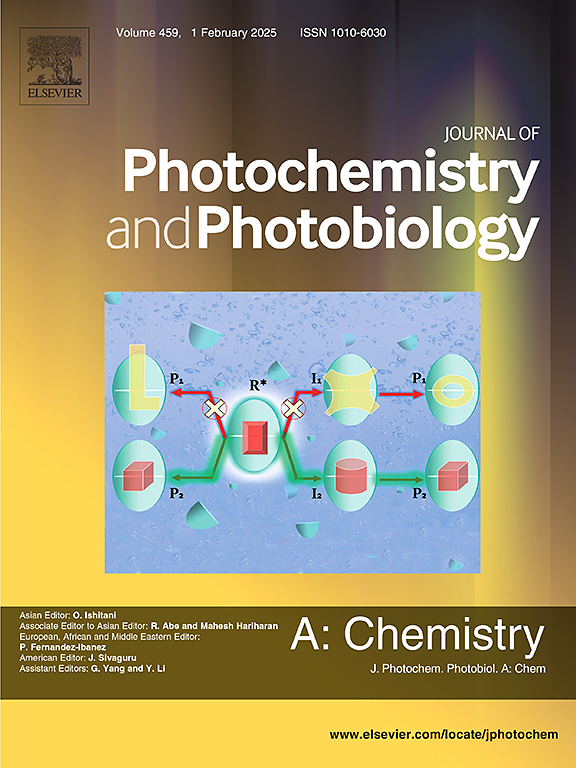Theoretical regulation of firefly bioluminescence spectra: Exploring new frontiers in NIR-II imaging
IF 4.1
3区 化学
Q2 CHEMISTRY, PHYSICAL
Journal of Photochemistry and Photobiology A-chemistry
Pub Date : 2025-03-19
DOI:10.1016/j.jphotochem.2025.116393
引用次数: 0
Abstract
Firefly bioluminescence (BL) imaging holds significant promise for non-invasive, real-time monitoring of biological processes. To improve its efficiency, considerable efforts have been made to achieve red-shifting of the emission wavelength. In this work, we systematically investigated the fluorescence properties of the light emitter oxyluciferin (oLu) dependent on the electrostatic effects using the TD DFT method. oLu is a typical donor–acceptor (D-A) charge transfer system, with the benzothiazole group acting as the electron donor and the thiazole group as the electron acceptor. Therefore, we focused on the significant impact of external charges on the fluorescence wavelength (λF), where the negative charge around the benzothiazole (donor) and/or the positive charge around the thiazole (acceptor) side promotes a red-shift in λF. Basing on these insights, we theoretically explored modifications to the oLu structure and mutations in luciferase to enhance D and A properties of oLu for facilitating the λF red-shift. Besides, we also inserted conjugation structures between D and A of oLu to format D-π-A systems for further red-shifting the λF. By integrating oLu modifications with luciferase mutations, we successfully designed a new nova-I351D using MD and QM/MM methods, a bioluminescent system that emits brightly in the near-infrared II (NIR-II) region. This system demonstrates significant potential for deep tissue imaging, providing a promising advancement in bioluminescence-based imaging technologies.

求助全文
约1分钟内获得全文
求助全文
来源期刊
CiteScore
7.90
自引率
7.00%
发文量
580
审稿时长
48 days
期刊介绍:
JPPA publishes the results of fundamental studies on all aspects of chemical phenomena induced by interactions between light and molecules/matter of all kinds.
All systems capable of being described at the molecular or integrated multimolecular level are appropriate for the journal. This includes all molecular chemical species as well as biomolecular, supramolecular, polymer and other macromolecular systems, as well as solid state photochemistry. In addition, the journal publishes studies of semiconductor and other photoactive organic and inorganic materials, photocatalysis (organic, inorganic, supramolecular and superconductor).
The scope includes condensed and gas phase photochemistry, as well as synchrotron radiation chemistry. A broad range of processes and techniques in photochemistry are covered such as light induced energy, electron and proton transfer; nonlinear photochemical behavior; mechanistic investigation of photochemical reactions and identification of the products of photochemical reactions; quantum yield determinations and measurements of rate constants for primary and secondary photochemical processes; steady-state and time-resolved emission, ultrafast spectroscopic methods, single molecule spectroscopy, time resolved X-ray diffraction, luminescence microscopy, and scattering spectroscopy applied to photochemistry. Papers in emerging and applied areas such as luminescent sensors, electroluminescence, solar energy conversion, atmospheric photochemistry, environmental remediation, and related photocatalytic chemistry are also welcome.

 求助内容:
求助内容: 应助结果提醒方式:
应助结果提醒方式:


